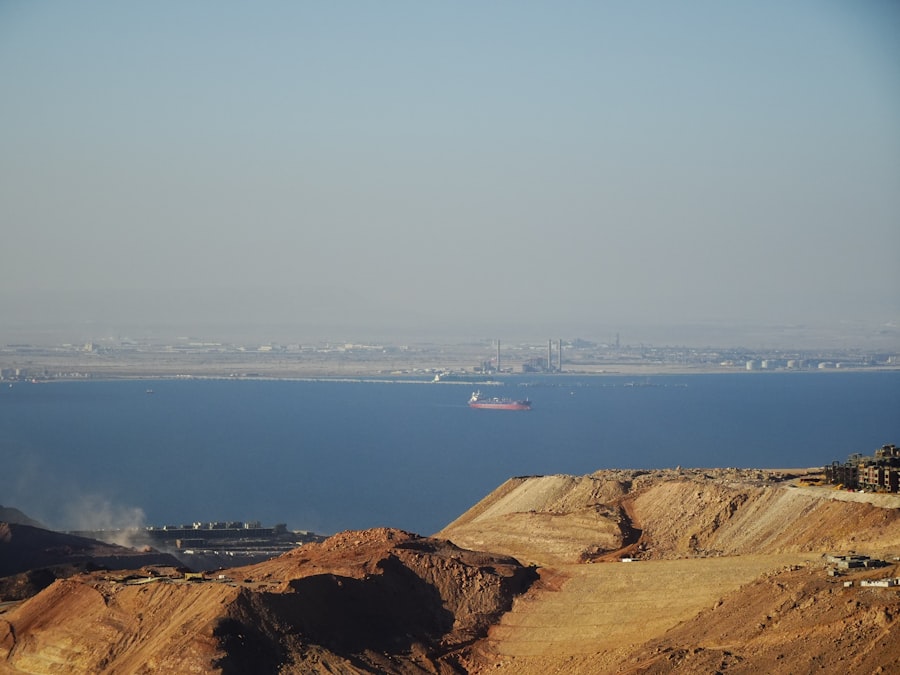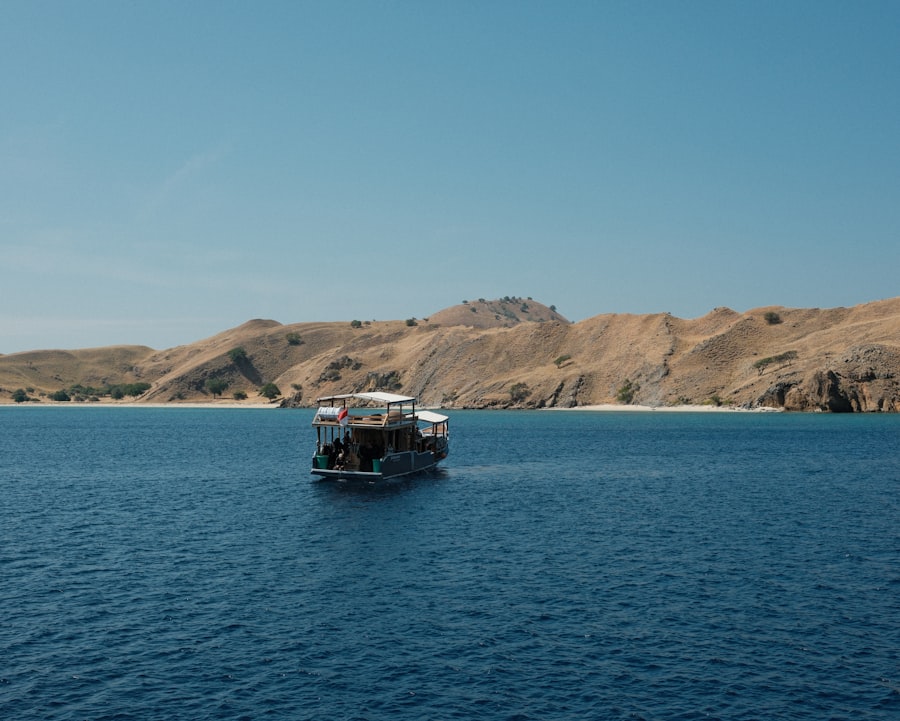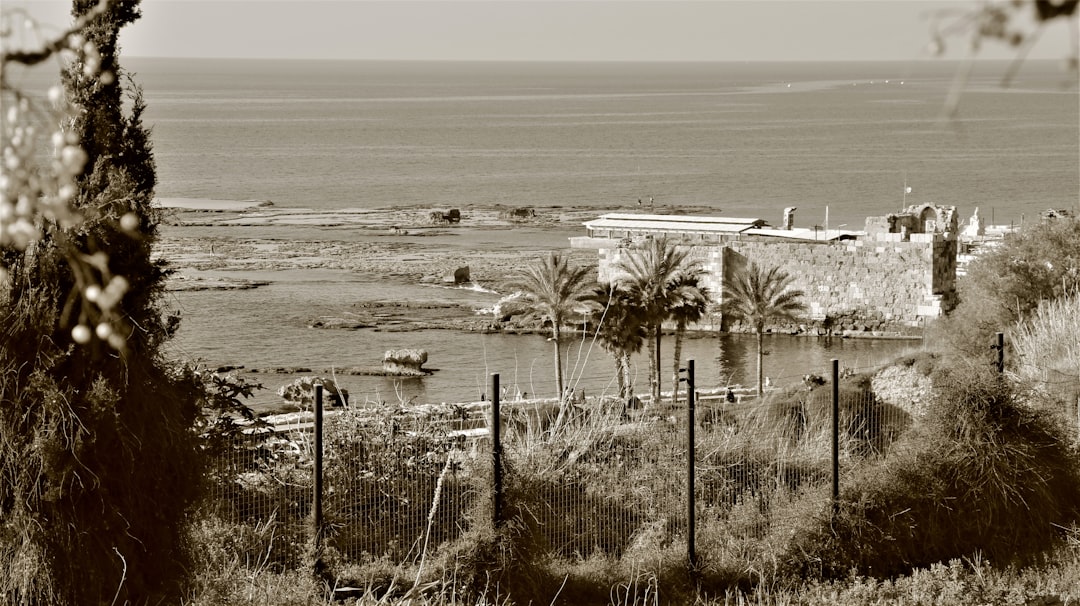The Strait of Hormuz, a narrow waterway connecting the Persian Gulf to the Gulf of Oman, serves as a critical juncture for maritime traffic in the region. Spanning approximately 21 miles at its narrowest point, this strait is not only a geographical landmark but also a vital artery for global trade. The strategic importance of the Strait of Hormuz is underscored by the fact that it is one of the most heavily trafficked maritime routes in the world, with a significant percentage of the world’s oil supply passing through its waters.
The strait’s location makes it a focal point for geopolitical tensions, economic interests, and environmental concerns. As nations around the globe continue to rely on oil and gas imports, the Strait of Hormuz has become increasingly significant. The waterway is flanked by Iran to the north and Oman to the south, creating a complex interplay of regional politics and international relations.
The strait’s narrowness and the volume of traffic it accommodates make it a potential flashpoint for conflict, as various nations vie for influence over this crucial passage. Understanding the dynamics of the Strait of Hormuz is essential for grasping the broader implications for global trade and security in the 21st century.
Key Takeaways
- The Strait of Hormuz is a narrow waterway that connects the Persian Gulf to the Gulf of Oman and the Arabian Sea.
- The geopolitical significance of the Strait lies in its strategic location, as it is a crucial chokepoint for the global oil trade, with a significant portion of the world’s oil passing through it.
- Navigating the challenges of the Strait includes dealing with congested shipping lanes, unpredictable weather conditions, and potential threats from piracy and political tensions in the region.
- Environmental concerns in the Strait include the risk of oil spills, pollution from shipping activities, and the impact of increased maritime traffic on marine life and ecosystems.
- Security concerns for ships passing through the Strait include the threat of piracy, terrorism, and potential military confrontations in the region.
- The impact of the Strait on global oil trade is significant, as it is a key transit point for oil shipments from major oil-producing countries in the Middle East to the rest of the world.
- There are opportunities for trade and commerce in the region, including the development of port infrastructure, logistics services, and economic partnerships with countries bordering the Strait.
- Strategies for navigating the challenges of the Strait include implementing advanced navigation technologies, enhancing maritime security measures, and promoting international cooperation among stakeholders.
- International cooperation is essential in ensuring safe passage through the Strait, involving collaboration between governments, navies, shipping companies, and international organizations.
- Future developments and potential changes in the region may include the expansion of port facilities, the diversification of energy sources, and the resolution of geopolitical tensions to ensure stability and security in the area.
- In conclusion, navigating the Strait of Hormuz in the 21st century requires a comprehensive approach that addresses the geopolitical, environmental, security, and economic aspects of this critical waterway.
Geopolitical significance of the Strait
The geopolitical significance of the Strait of Hormuz cannot be overstated. It serves as a critical chokepoint for oil shipments from the Gulf states, particularly Saudi Arabia, Iraq, and the United Arab Emirates. Approximately 20% of the world’s oil supply transits through this narrow passage, making it a linchpin in the global energy market.
Moreover, the Strait of Hormuz is not just a conduit for oil; it is also a symbol of power and influence in the region. Control over this waterway can significantly impact global oil prices and, by extension, national economies.
The geopolitical landscape surrounding the strait is characterized by tensions between Iran and its neighbors, particularly in light of Iran’s historical claims to control the waters. This ongoing rivalry has implications for international relations, as countries navigate their interests in a region marked by volatility and uncertainty.
Challenges of navigating the Strait

Navigating the Strait of Hormuz presents numerous challenges for commercial shipping and naval operations alike. The strait’s narrow width creates a bottleneck effect, where large vessels must maneuver carefully to avoid collisions or grounding. Additionally, strong currents and unpredictable weather conditions can complicate navigation further, requiring skilled seamanship and advanced navigational technology.
The high volume of traffic in such a confined space increases the risk of accidents, making it imperative for vessels to adhere to strict maritime protocols. Furthermore, geopolitical tensions exacerbate these navigational challenges. The presence of military vessels from various nations can create an atmosphere of uncertainty and risk for commercial shipping.
Incidents involving harassment or aggressive maneuvers by naval forces can lead to heightened tensions and potential confrontations. As a result, shipping companies must remain vigilant and adaptable, employing advanced tracking systems and communication technologies to ensure safe passage through this critical waterway.
Environmental concerns in the Strait
| Environmental Concern | Metrics |
|---|---|
| Water Pollution | Chemical contaminants, oil spills, sewage discharge |
| Marine Debris | Plastic waste, abandoned fishing gear |
| Habitat Destruction | Coastal development, dredging, deforestation |
| Overfishing | Decline in fish populations, bycatch of non-target species |
The environmental concerns surrounding the Strait of Hormuz are multifaceted and significant. The strait’s waters are home to diverse marine ecosystems that are vulnerable to pollution and overfishing. Oil spills from tankers pose a substantial threat to marine life, as they can devastate local habitats and disrupt fishing industries that many communities rely on for their livelihoods.
Additionally, increased maritime traffic raises concerns about noise pollution and its impact on marine species, particularly those that rely on echolocation for navigation. Moreover, the potential for military conflict in the region raises alarms about environmental degradation. Armed confrontations could lead to catastrophic spills or other forms of pollution that would have long-lasting effects on both marine ecosystems and coastal communities.
As nations grapple with these environmental challenges, there is an urgent need for collaborative efforts to protect the delicate balance of life in and around the Strait of Hormuz.
Security concerns for ships passing through the Strait
Security concerns are paramount for vessels transiting through the Strait of Hormuz. The strait has been a hotspot for piracy, smuggling, and military confrontations, making it essential for shipping companies to implement robust security measures. The threat of attacks on commercial vessels has led many shipping firms to invest in private security teams or to reroute their ships through longer paths that may be less economically viable but offer greater safety.
In recent years, incidents involving drone strikes or missile attacks on oil tankers have heightened fears among shipping companies operating in this region. These security threats necessitate constant vigilance and coordination with naval forces patrolling the area. As tensions between regional powers continue to simmer, ensuring safe passage through the Strait of Hormuz remains a top priority for both commercial interests and national security agencies.
Impact of the Strait on global oil trade

The impact of the Strait of Hormuz on global oil trade is profound and far-reaching. As one of the primary conduits for oil exports from the Middle East to international markets, any disruption in this waterway can have immediate repercussions on global oil prices.
This reality underscores how interconnected global markets are with regional stability in places like the Strait of Hormuz. Moreover, fluctuations in oil prices due to events in or around the strait can influence energy policies across nations. Countries heavily reliant on oil imports may seek alternative energy sources or invest in strategic reserves to mitigate risks associated with potential disruptions.
As such, developments in the Strait of Hormuz resonate far beyond its geographical confines, shaping energy strategies and economic policies on a global scale.
Opportunities for trade and commerce in the region
Despite its challenges, the Strait of Hormuz also presents numerous opportunities for trade and commerce. The region is rich in natural resources beyond oil, including natural gas reserves that are increasingly becoming a focal point for international investment. As countries seek to diversify their energy portfolios and reduce reliance on oil, natural gas exports through the strait could become a significant driver of economic growth.
Additionally, as global trade patterns evolve, there is potential for increased maritime traffic through the Strait of Hormuz related to non-oil commodities. The rise of e-commerce and demand for goods from Asia to Europe could lead to greater shipping activity in this vital corridor. This shift presents opportunities for regional economies to capitalize on their strategic location by enhancing port facilities and logistics capabilities to accommodate growing trade volumes.
Strategies for navigating the challenges of the Strait
To navigate the myriad challenges presented by the Strait of Hormuz, stakeholders must adopt comprehensive strategies that prioritize safety, security, and environmental sustainability. For shipping companies, investing in advanced navigational technologies can enhance situational awareness and reduce risks associated with navigating narrow waters. Implementing robust training programs for crew members can also ensure that they are well-prepared to handle emergencies or unexpected situations.
On a broader scale, regional cooperation among nations bordering the strait is essential for addressing security concerns and promoting safe passage. Joint naval exercises and information-sharing initiatives can foster trust among nations while enhancing collective security measures. Furthermore, engaging in dialogue about environmental protection can lead to collaborative efforts aimed at preserving marine ecosystems while balancing economic interests.
International cooperation in ensuring safe passage through the Strait
International cooperation plays a crucial role in ensuring safe passage through the Strait of Hormuz. Given its significance as a global trade route, various nations have recognized the need for collaborative efforts to maintain security and stability in this vital waterway. Multinational naval coalitions have been established to patrol the strait and deter potential threats from piracy or hostile actions against commercial vessels.
Additionally, diplomatic initiatives aimed at reducing tensions between regional powers can contribute to a more secure environment for shipping activities. Engaging in dialogue about shared interests—such as maintaining open trade routes—can help build trust among nations that may otherwise be at odds with one another. By fostering international cooperation, stakeholders can work together to create a safer maritime environment that benefits all parties involved.
Future developments and potential changes in the region
Looking ahead, several developments could shape the future landscape of the Strait of Hormuz and its surrounding region. Geopolitical dynamics may shift as new alliances form or existing tensions evolve into more cooperative relationships. The emergence of alternative energy sources could also impact oil demand from Gulf states, potentially altering shipping patterns through the strait.
Moreover, advancements in technology may enhance navigational safety and security measures within this critical waterway. Innovations such as autonomous vessels or improved surveillance systems could revolutionize how ships navigate through congested areas like the Strait of Hormuz. As these changes unfold, stakeholders must remain adaptable and proactive in addressing emerging challenges while seizing opportunities for growth.
Navigating the Strait of Hormuz in the 21st century
Navigating the Strait of Hormuz in the 21st century presents a complex interplay of challenges and opportunities that require careful consideration from all stakeholders involved. As a vital artery for global trade—particularly in oil—the strait’s significance cannot be understated. Geopolitical tensions, environmental concerns, security threats, and evolving trade patterns all contribute to an intricate landscape that demands strategic foresight.
In this context, fostering international cooperation will be essential for ensuring safe passage through this critical waterway while addressing environmental sustainability concerns. By embracing innovative solutions and engaging in collaborative efforts among nations bordering the strait, stakeholders can work towards creating a more secure maritime environment that supports both economic growth and ecological preservation. As global reliance on energy resources continues to evolve, navigating these waters will require adaptability and resilience from all parties involved—ensuring that future generations can benefit from this vital maritime corridor.
The Strait of Hormuz is a strategically vital waterway, serving as a critical chokepoint for the global oil trade. Its significance is underscored by the fact that a substantial portion of the world’s petroleum passes through this narrow passage, making it a focal point for geopolitical tensions. For those interested in exploring more about the geographical and strategic importance of such locations, an insightful article can be found on MyGeoQuest. This resource delves into various geographical phenomena and their implications. You can read more about it by visiting MyGeoQuest.
WATCH NOW! Unlocking Disaster: 7 Choke Points That Could Fracture Our Connected World Overnight
FAQs
What is the Strait of Hormuz?
The Strait of Hormuz is a narrow waterway located between the Persian Gulf and the Gulf of Oman. It is one of the most strategically important chokepoints in the world, through which a significant portion of the world’s oil supply is transported.
How wide is the Strait of Hormuz?
The width of the Strait of Hormuz varies, but at its narrowest point, it is approximately 21 miles wide.
Why is the Strait of Hormuz important?
The strait is important because it is a critical chokepoint for the transportation of oil. It is estimated that about 20% of the world’s oil supply passes through the strait.
Which countries border the Strait of Hormuz?
The strait is bordered by Iran to the north, and the United Arab Emirates and Oman to the south.
What are the potential risks associated with the Strait of Hormuz?
The strait is a potential hotspot for geopolitical tensions and conflicts, as it is a crucial passage for oil tankers. There have been incidents of maritime disputes, piracy, and military confrontations in the area.
How is the security of the Strait of Hormuz maintained?
The security of the strait is maintained through the presence of naval forces from various countries, including the United States, Iran, and other Gulf states. Additionally, international maritime laws and agreements help regulate the passage of ships through the strait.
